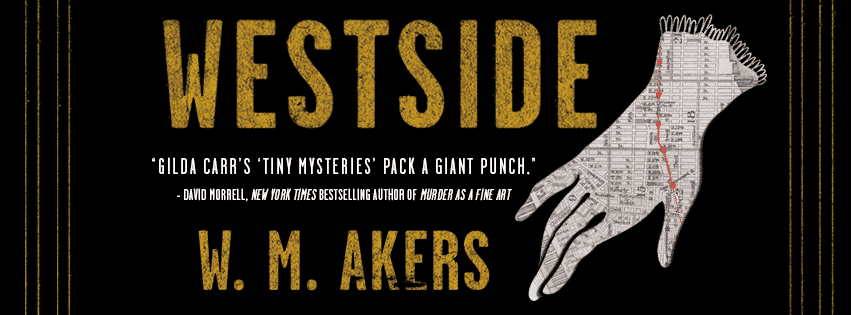![MP29998_Westside_FacebookCover-v2[2] (1)](http://www.savethecat.com/wp-content/uploads/2019/05/MP29998_Westside_FacebookCover-v22-1.png) “When in doubt, have a man come through the door with a gun in his hand.”
“When in doubt, have a man come through the door with a gun in his hand.”
That comes from Raymond Chandler’s Trouble Is My Business, where he described it as the guiding ethos of the old pulps. It’s not entirely serious advice—Chandler admits things “could get to be pretty silly,” if you lean on it too hard—but I find its simplicity bracing, an invaluable reminder that your villain should always take the lead.
When I was writing Westside, which takes place in the golden age of gangsters and pulps, I taped Chandler’s dictum to the wall in front of my desk as a reminder of the ruthlessness of the era. About halfway through my first draft, however, I had written myself into a terrible mess. I had no idea what my villain wanted, and all the gunmen in the world are useless if you don’t know why they’re coming through the door.
A story is only as good as its villain, and a villain is only as good as their plan. It’s their plan that pushes the story forward, that attracts the hero’s attention, that threatens to destroy the hero unless they stop it first.
In designing your villain, you must know them well enough to produce a tight paragraph explaining exactly what they want and what devilry they will undertake to get it. In that paragraph, you need to be able to state precisely what will happen if the villain is not stopped—that is, if your hero does not intervene. The worse it is, the higher the stakes, and the better your story will be.
As an example, consider the third Die Hard film, an intricately-plotted thriller built around a series of mysteries. Writing such a complex story would be impossible if you didn’t start knowing everything in the paragraph below:
In Die Hard: With a Vengeance, Simon Gruber wants to rob the Manhattan Federal Reserve, and to take revenge on John McClain—who killed his brother Hans—along the way. He concocts an elaborate series of bomb threats and riddles to distract McClain and the NYPD while he and his men steal every ounce of bullion in the Federal Reserve. If he is not stopped, McClain will be humiliated and Gruber will escape, a disgustingly wealthy man.
Compare that to Skyfall, a similarly over-the-top thriller that feels like its villain’s story was designed to fit the set pieces, and not the other way around. Raoul Silva (Javier Bardem) wants M dead—a nice, simple desire for a Bond villain—but the steps he takes, as outlined by Josh Wolk in a post for Vulture, reveal a story that doesn’t give a damn about what its villain actually wants.
In Skyfall, Raoul Silva wants to murder M, head of MI-6, for allowing him to be captured and tortured by the Chinese government. To do so, he secures a secret island, begins murdering NATO agents, blows up M’s office, gets captured on purpose, escapes, tries to drop a train on James Bond, disguises himself as a policeman, sneaks into a crowded courtroom, and attempts to shoot M. If he is not stopped, M will die.
It’s not great. You can do better. We can all do better.
So how do you meet your villain? The same way you do any character. Ask questions about them and answer in as much detail as you can. Write monologues in their voice—what could be more fun than a villain’s monologue?—and think through their backstory until you know them inside and out. Relish the opportunity to make them as bad as you need them to be.
The more time you spend getting to know your villain, the better you will understand them, and the easier it will be to write them with sympathy and even love. Although Simon Gruber’s motive and methods approach supervillainy, his hatred of McClain comes from a simple, understandable place. Silva’s grudge against M is equally sympathetic, but it is so distantly related to his byzantine plan that it has no impact at all.
Once you know the ins-and-outs of your villain and their plan, you can build your mystery on top of it. When the man comes through the door with the gun in his hand, your hero will be surprised, but you’ll know just what he’s doing there.









